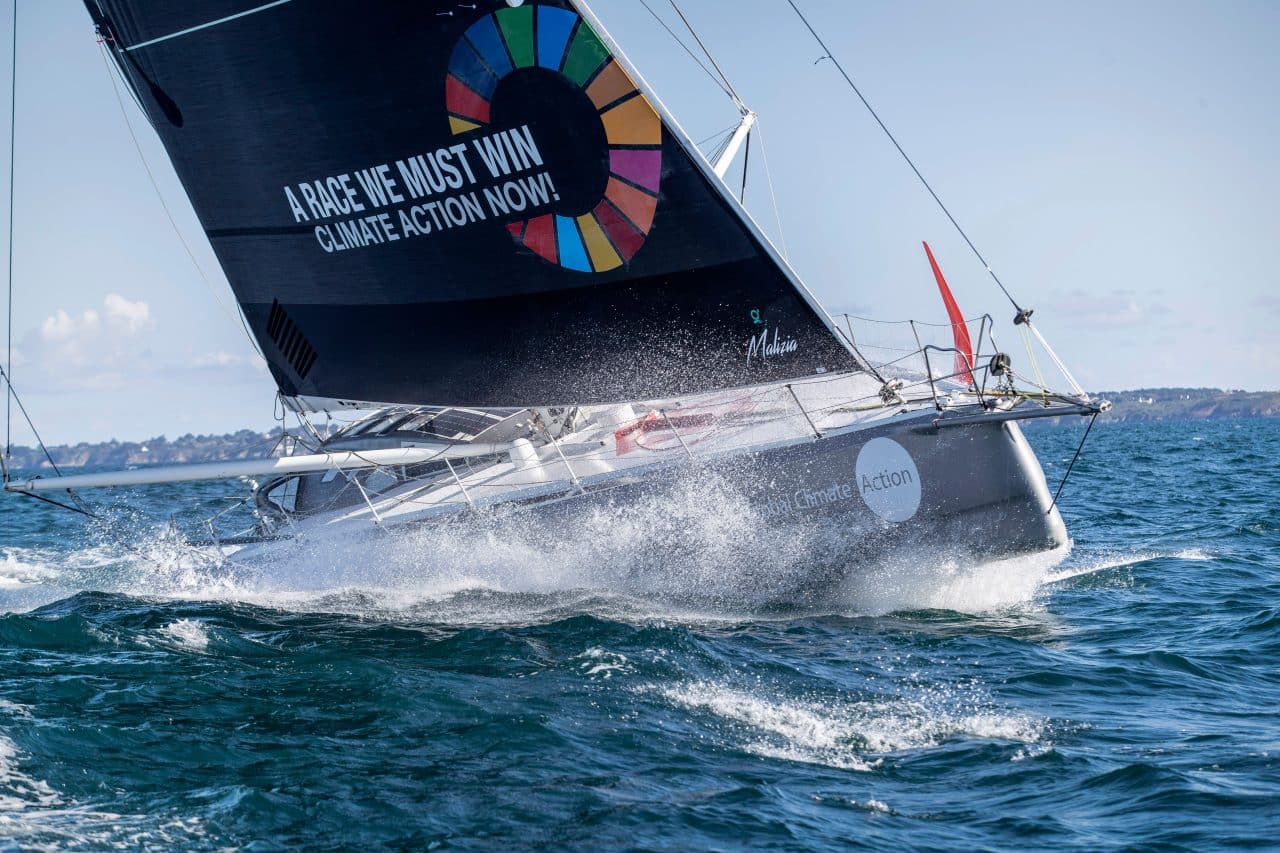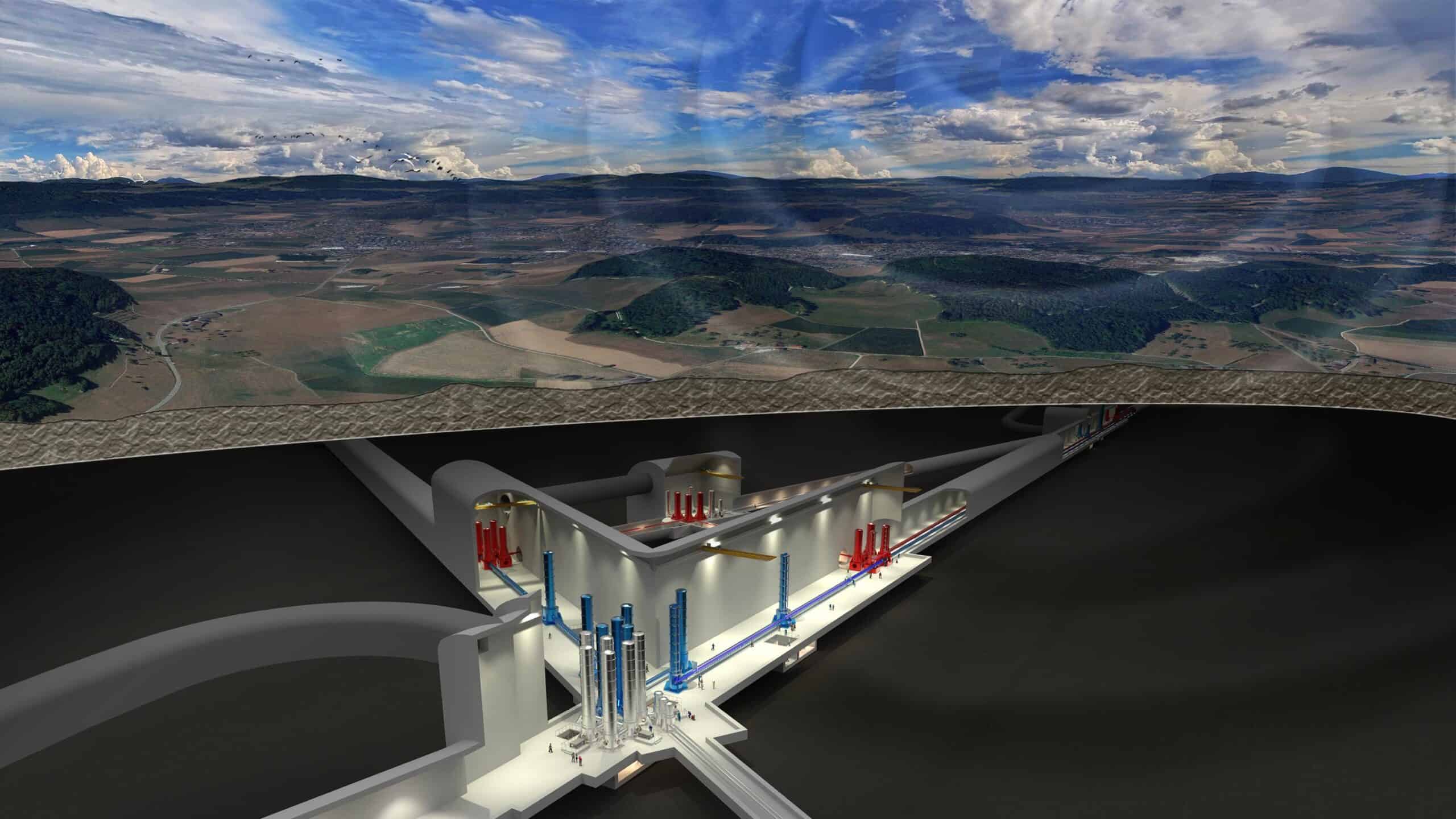
Why the Swedish climate activist Greta Thunberg chose the racing yacht Malizia II for her polarizing Atlantic crossing is obvious when one takes a look at the interior of the ocean-going sailboat. After all, this Open 60 Class Yacht, which is one of the fastest monohulls in the world, is not just home to high-tech navigation equipment.

Skipper Boris Herrmann and co-skipper Pierre Casiraghi had sensors built into the hull of the boat over a year ago. These sensors provide measurements for ocean and climate research during all Malizia II voyages. Some of you may wonder what’s behind the motto “Unite Behind the Science” which is on the mainsail of the ship. It stands for a joint initiative between the GEOMAR Helmholtz Centre for Ocean Research Kiell, the Kiel research network “Future Ocean” and the Max Planck Institute for Meteorology (MPI-M) in Hamburg.
Measurement of carbon dioxide (CO2) concentrations
Of course, with a speed of 25 knots the carbon boat was built to compete in the most demanding yacht races on the planet. The Vendée Globe, for instance, is a single-handed endurance race around the world. This competition represents a highly demanding challenge for sailors. At the same time, sailors navigate the remotest areas of the world’s oceans. Reason enough for Herrmann to provide the German science consortium with the urgently needed data for research, despite the added weight of the measuring apparatus. Due to the sheer size of the ocean and the high cost associated with taking samples, many marine regions lack measurement data. Even though the ocean plays an important role in the climate system.
“The data from our scientific assistants on racing yachts – such as Boris Herrmann – make an important contribution towards understanding our ocean, our climate and towards a sustainable world,” explains Dr. Toste Tanhua, marine chemist at the GEOMAR Helmholtz Centre for Ocean Research in Kiel.

The state-of-the-art sensors installed on the Malizia II by the Kiel-based company SubCtech primarily measure carbon dioxide (CO2) concentrations in the surface water of the ocean. Once the yacht reached New York, the data was sent to the GEOMAR Helmholtz Centre in Kiel and the Max Planck Institute in Hamburg.
Sensors are getting smaller & lighter
In the coming years, the apparatus on board Malizia II will continue to collect data across a distance of around 70,000 nautical miles. New technology has recently made it possible to build sensors so small and lightweight that they can also be used on board racing yachts. This was also the case for the team Turn the Tide on Plastic in the last Volvo Ocean Race (as we reported). While the sensors on the Malizia II are maintenance-free, the measuring equipment on the Volvo yacht was also fitted with filter systems that needed to be changed daily. This is however impossible to expect from a 1-2-person crew like that of the Malizia during a race.
As a matter of fact, science has been using automatic measuring equipment on merchant ships as well as autonomous measuring robots in order to acquire new data for several years now – in addition to their own research ships. These are then brought all together by experts from MPI-M, GEOMAR and the Kiel research network “Ocean of the Future”. This will make it easier not only to estimate the CO2 exchange between the ocean and the atmosphere, but also the processes driving this exchange. Dr. Tanhua explains:
“It is important to understand accurately CO2 absorption in the ocean in order to be able to understand and monitor the effects of CO2 minimization measures and improve climate models.”
C02 absorption has an impact on marine life
The increase in carbon dioxide concentrations in the atmosphere is the main cause of climate change and global warming. This increase in carbon dioxide is mainly due to the burning of fossil fuels. But only just under half of these emissions remain in the atmosphere. The rest is distributed across the ocean and over land-based plants. The oceans thereby contribute to mitigating global warming. At the same time, CO2 absorption lowers the pH value of seawater – with significant effects on marine life.
The journey of Malizia II – including interactive data with photos and videos – can be followed online here .
More articles by Innovation Origins on ocean research can be found here.








